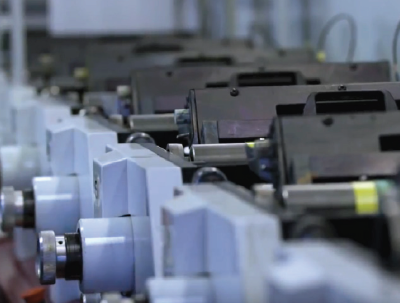When Central Valley Labels switched to printing using Phoseon UV LED solutions, it discovered that it could cut production times in half, reduce unproductive downtime and save money on maintenance and energy.
Central Valley Labels (CVL) has been a supplier of agricultural, industrial, warehousing, promotional and retail packaging labels for over 25 years. The company prints high-quality and high-resolution labels in a wide variety of shapes, material and sizes to meet a comprehensive range of specific labelling application such as agricultural labels, bags for fresh fruits, sleeves and bands for fruits, point-of-purchase displays, brochures and more.
To stay ahead in the competitive market for flexographic printing, CVL was the first business in California to purchase a Mark Andy P3 Series 13″ and P4 flexographic printing presses with Phoseon LED curing technology. The company quickly discovered that the Phoseon UV LED curing helped it achieve higher production throughput and more uptime while at the same time reducing maintenance and energy costs.
Higher Production Throughput: With Phoseon UV LED lamps, CVL’s presses are able to run at speeds up to 700 ft/min, while holding tight registration regardless of type of artwork being applied-full colour process or spot colours. CVL has also adopted fast-drying UV inks, greatly streamlining operational processes.
Before switching to UV LED, when running with UV arc lamps, CVL was averaging around 15,000 units an hour. With the new process, the company was able to reach 25,000 to 28,000 units an hour. Because the new presses run so fast and true, most of the production times for labels run on these presses have been effectively cut in half. This saves CVL and its customers valuable time and money.
The CVL production facility is now structured to run with high efficiency that allows press operators to produce mass volumes of labels in one shift, and multiple millions of labels with a fast overall turnaround time. As a result, the company has eliminated the need for night shifts. Increased Uptime: Before the transition to UV LED lamps, CVL used the traditional mercury curing process. On a typical day with multiple press runs, print technicians had to stop the presses several times a day to clean equipment between runs of different media. As a result, the presses were in production only 70% of the time; the remaining 30% of time was spent changing inks or cleaning the equipment between runs, resulting in a lot of unproductive downtime.
UV inks do not require the attention when ink colours are changed, and different media can be run on the same press without the need for time-consuming cleaning of equipment, greatly reducing downtime. Operators can run the machines day in and day out without having to stop, which increases the amount of time the presses are running to 90%, a substantial uptime gain with a proportional rise in operational savings. In addition, the old UV mercury arc lamps would take up to 30 minutes each run to reach temperatures necessary to effectively cure UV inks, whereas the new UV LED lamps are ready to work within minutes. UV LED lamps are also fully dimmable, with their intensity coordinated to match the running speed of the press by the onboard printer controller.
Reduced maintenance and improved workplace environment
Before switching to Phoseon UV LED curing technology, CVL was spending close to $40,000 to $50,000 per year on UV bulb replacement for their old UV mercury presses. When the company switched to the Phoseon UV LED solution, that expense was eliminated. Traditional UV mercury arc lamps typically last between 500 to 2,000 hours and begin degrading from the first second they are powered. Thus, they must be replaced every few weeks. Properly engineered UV LED systems, on the other hand, have demonstrated lifetimes between 20,000 and 70,000 hours with degradation of less than 15 – 20% of peak output over that period.
They operate for many years without replacement, and the only maintenance is keeping the emitting window, optics, reflectors and air filters clean. In addition, UV LED solutions are healthier for employees as they do not generate mercury and ozone gases, nor do they emit UVB and UVC wavelengths. All of which make for a safer operating environment.
Lower Energy Costs
Even greater savings are gained for converters that transition to UV LED lamps from traditional UV mercury arc lamps, which use 70% more electrical power to operate than low-heat, low-energy UV LED technology. UV LED lamps also require much lower maintenance service than traditional UV lamps, due to their much longer life. The beauty of LEDs is that they instantly turn on or off. As a result, the UV source is cycled on/off as needed and interlocked to material-handling equipment so that if any production stops occur, the light immediately switches off and then back on as soon as the line starts again.
Expended operations flexibility
UV LED technology cuts down on the amount of heat put towards the substrates. CVL does not have to worry about the ink being dry, and can easily switch substrates from thermos transfer to semi-gloss to BOPP. Phoseon UV LED curing is the new technology for flexographic printing, providing faster printing throughput for higher yields, and decreased operating costs and maintenance for increased profitability. The low heat of UV LED lamps also allows the use of thinner and more heat-sensitive substrates. Importantly, the specialised inks developed specifically for UV LED curing can be printed on a wide range of media, eliminating the requirement for different inks for different materials, and the need to stop the presses to change inks and clean equipment during multiple print runs. Phoseon UV LED solutions also lead to better quality products, and deliver over this quality to their end customers.
This article is an advertorial; the featured company created the wording and paid for its placement. It has been checked by Whitmar Publications to ensure that it meets our editorial standards.






